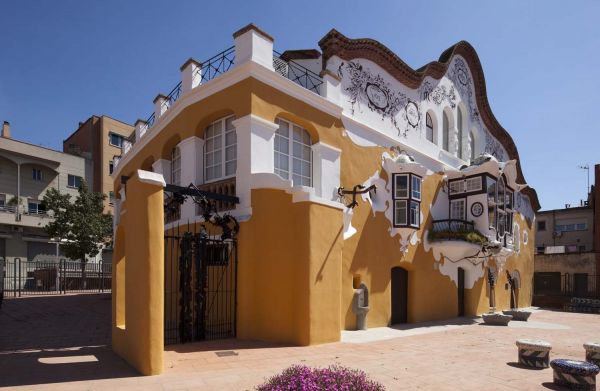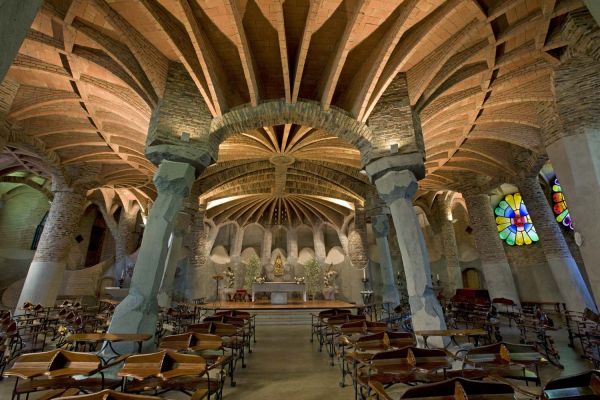SANTA COLOMA DE CERVELLÓ
The first stop in this
Modernista excursion to the Baix Llobregat is the
Colònia Güell, in Santa Coloma de Cervelló. It was built in 1890 by the best
Modernista architects of the time to rehouse the textile industries that Eusebi Güell had at the Vapor Vell in Sants, removing them in this way from the labour conflicts taking place in Barcelona. The ensemble is structured around the factory with houses for the workers, the school, a theatre and church. It is like a little
Modernista city that has been kept almost the same as it was before, and it is still inhabited and full of life.
Antoni Gaudí was commissioned to design the church, but only
the crypt was ever built, recognised now by UNESCO as a World Heritage Site. It was here that Gaudí first put some of his innovative ideas into practice, such as the catenary arches and the delightful fluid and dynamic treatment he gave the interior.
SANT JOAN DESPÍWith this image in mind we go now to Sant Joan Despí where the teeming creativity of another
Modernista architect, Josep Maria Jujol, awaits us. Jujol turned this villa into his "architectural experiments laboratory". His boundless creativity is especially evident in two buildings: the
Torre de la Creu, better known as the
Torre dels Ous ('Tower of Eggs') on account of the shape of the cupolas, and
Can Negre, which has become Sant Joan Despí's symbol,
par excellence, of Jujol's creative imagination on account of the unmistakable gallery on the facade in the form of a carriage.
ESPLUGUES DE LLOBREGATIn Esplugues de Llobregat we delve further into the
Modernista universe through two materials of prime importance during this period of such rich ornamentation: ceramics and tiles. In
La Rajoleta, the ceramics museum, you can see the kilns of the former Pujol i Bausis factory, whose heyday coincided with
Modernisme thanks to the commissions it received from Gaudí, Puig i Cadafalch and Domènech i Montaner, amongst other architects. The excursion ends at the
Museu Can Tinturé, where there is a chronological and artistic account of the evolution of ornamental tiles from the medieval period to the dawn of industrialisation.
*An excursion proposed in collaboration with the magazine Descobrir.

